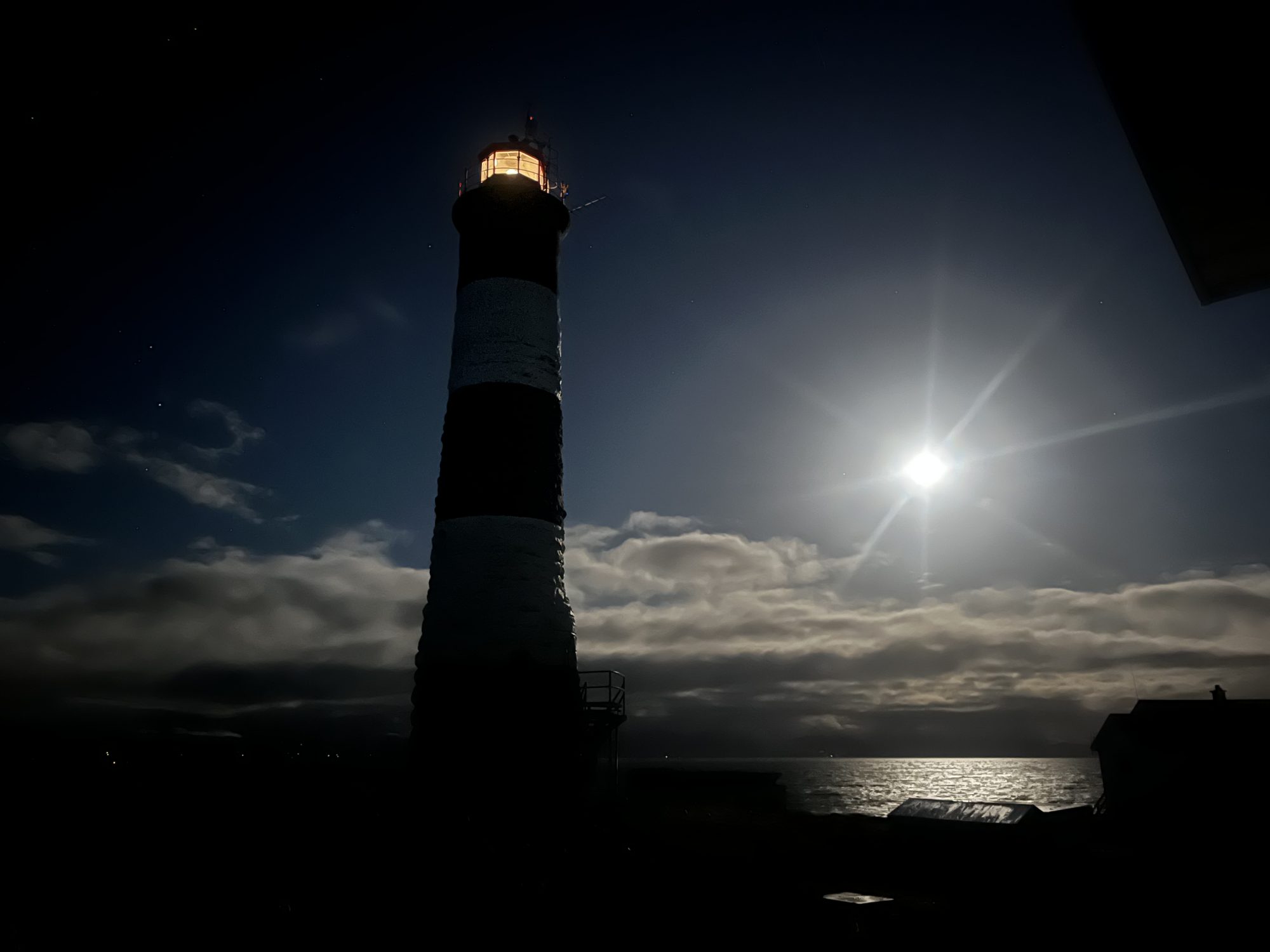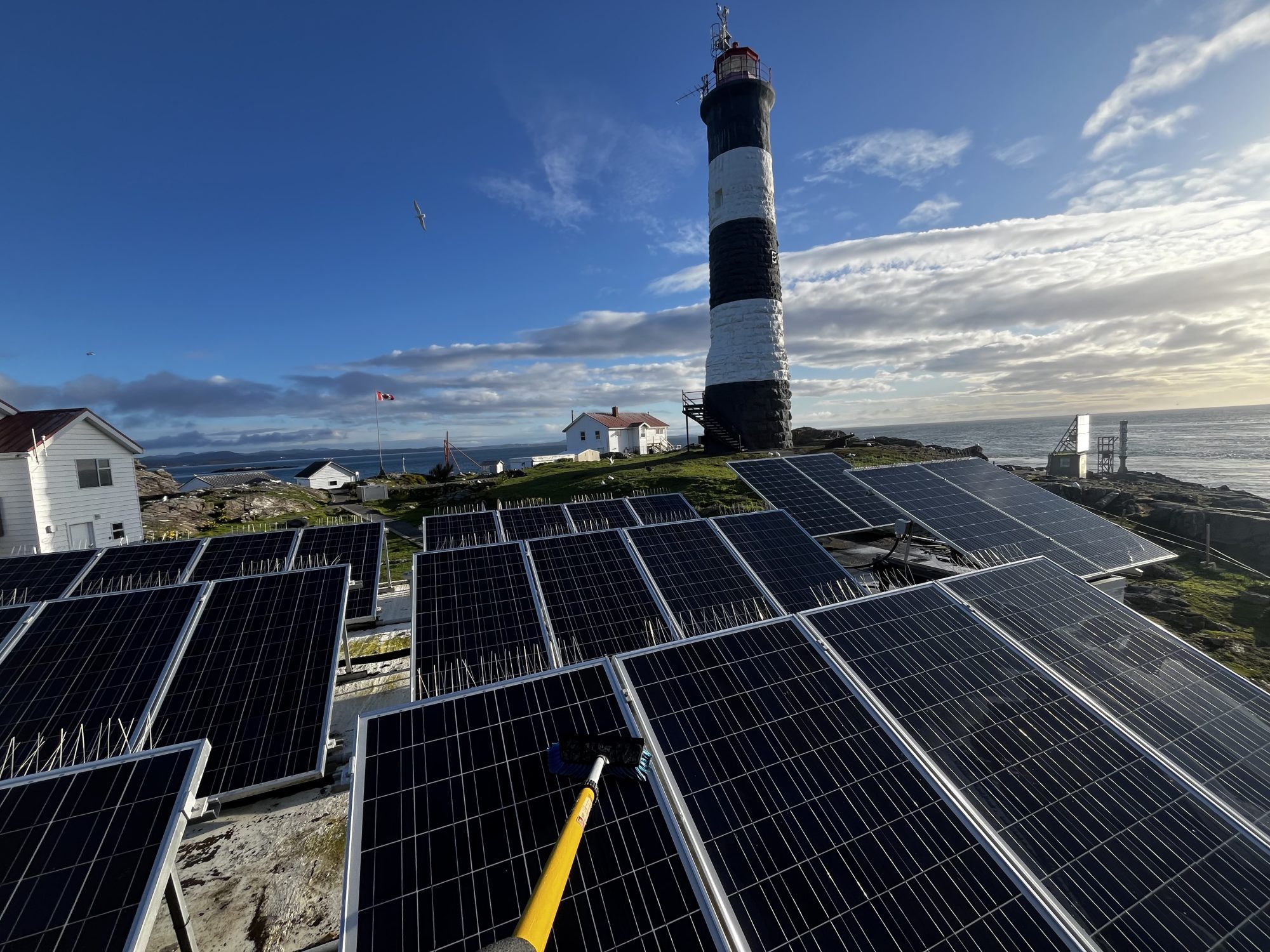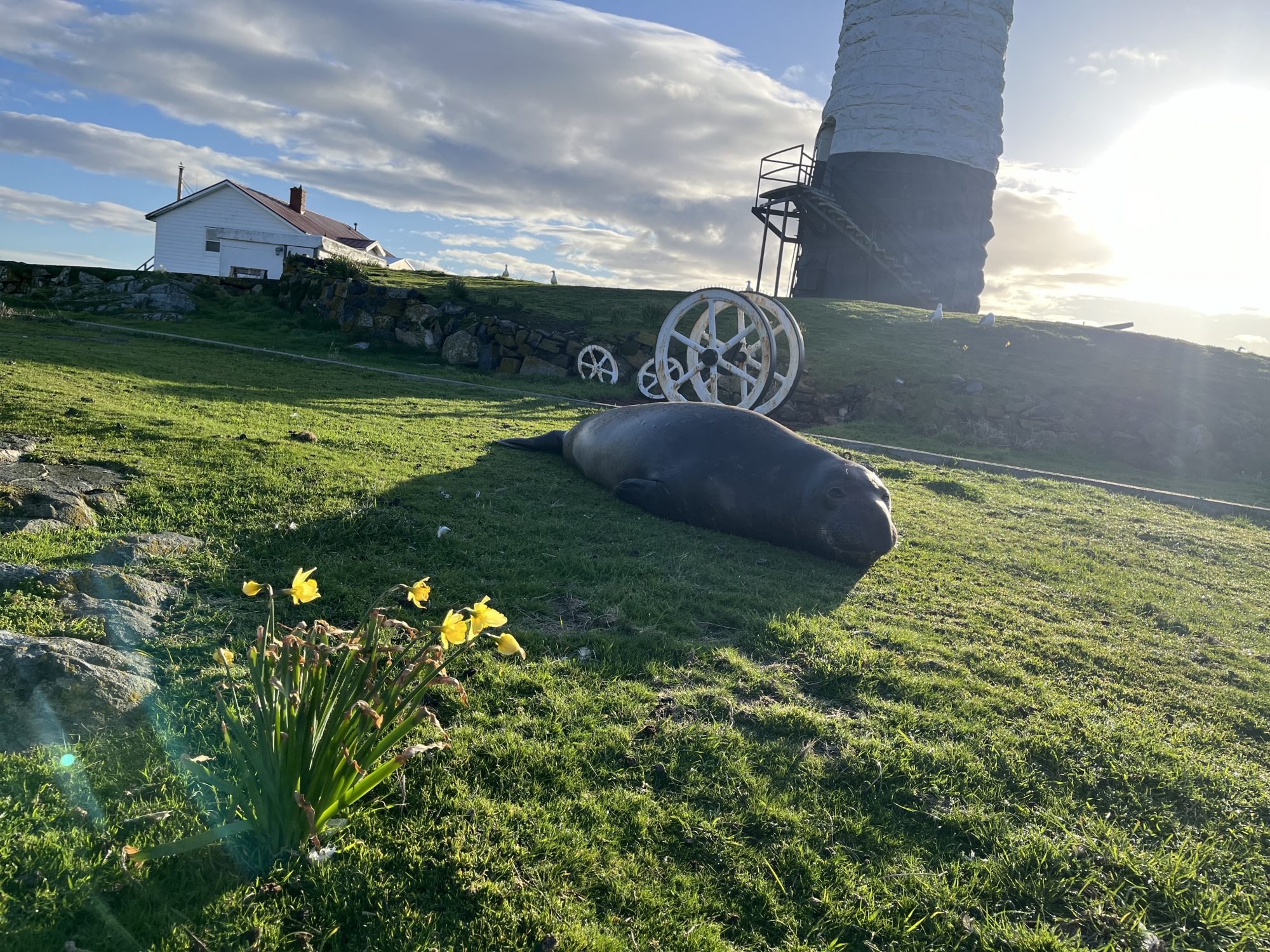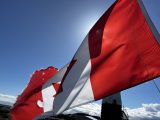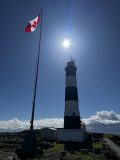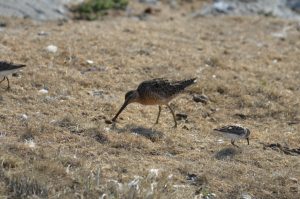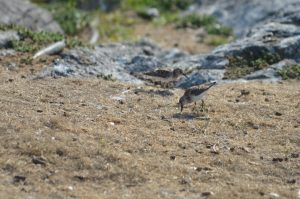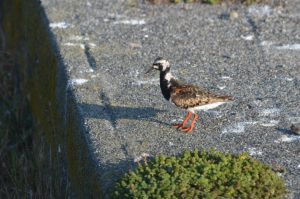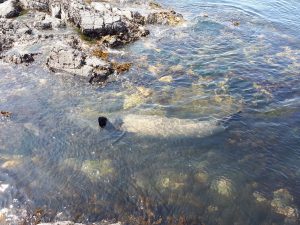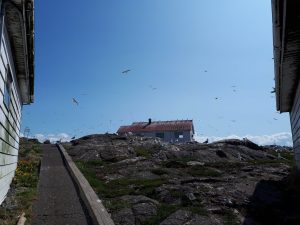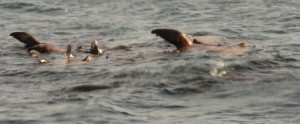Wind: Yesterday 5-10 knots W; Today 5-20 knots NE
Sea State: up to 1 m chop
Visibility: 10 NM
Sky: overcast with rain this afternoon
Temperature: 7 C
Atmospheric CO2: 412.60 ppm (recorded by NOAA at Mauna Loa Observatory, Hawaii)
December 28 is the annual Christmas Bird Count, which happens in thousands of locations across North America. It has been happening for twenty-two years at Race Rocks. This morning with the northeast wind and dropping pressure, the planned visit by the local bird enthusiasts was called off. But fear not, citizen science provailed. For an hour and half this morning, I searched for birds of all feathers as I walked around the island and looked out from the top of the lighthouse. I used binoculars, a spotting scope and the zoom lens on the camera to check out the shoreline, water and the rocky islets of the ecological reserve. I was able to spot 12 species of birds, some of which were not present when I did the weekly census two days ago. Here are the results and photos of the bird count:
25 bald eagles (5 juvenile, 20 adults)
1 fox sparrow
4 canada geese
2 ravens
6 harlequin ducks
208 double-crested cormorants
59 pelagic cormorants
281 thayer’s gulls (on the rocks and in the water)
48 mew gulls (near Turbine Rock and North Rocks)
18 surfbirds
42 black turnstones
4 black oystercatchers
Photos of some of the birds seen today:
-
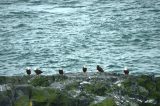
-
Six of the 25 eagles seen in the reserve this morning
-
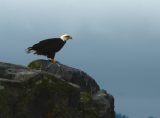
-
Bald eagle on the high point of the island near camera 5
-
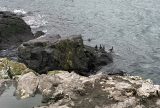
-
Six harlequin ducks near the southwest corner of the island
-
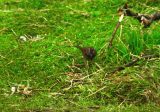
-
Fox sparrow in the middle of the island
-
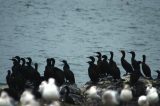
-
Double-crested and pelagic cormorants
-
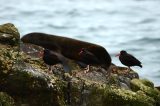
-
Three black oystercatchers on the south side of the island, near the energy building
-
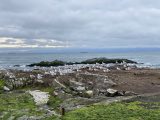
-
A colony of Thayer’s gulls on southeast side of the island
-
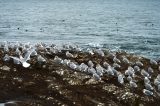
-
Thayer’s gulls on the southwest corner of the island
-
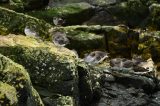
-
18 surfbirds near the surge channel just west of the energy building
In the past two days, I have seen two entangled sea lions. Yesterday morning, I noticed a large steller sea lion with a small rope around its neck. The rope appeared to be cutting into the underside of the animal’s neck. A short while later, I noticed a california sea lion with a cut on its neck from what appears to be a plastic strap wrapped around it. The Marine Mammal Rescue Centre and Department of Fisheries and Oceans have been notified. If the sea lions remain at Race Rocks, it might be possible for a rescue to occur. Both animals were seen again today. See the entangled sea lion and marine mammal rescue tags for past occurrences that were written about in the Log. Two other california sea lions were seen that appear to have healing wounds from something that was previously wrapped around their necks. The animals don’t appear to have tags on their flippers to signify they have been rescued.
The Canadian flag was looking a bit tattered, so I replaced it today.
Just before sunset today, there were four eco tour boats in the reserve. The boats were all close to each other, which usually means something interesting is nearby. Sure enough, a pod of five or six orcas were passing westward. They travelled along the north side of the ecological reserve, just south of Bentinck Island and the Department of National Defence base.
Here are some photos from the past two days:
-
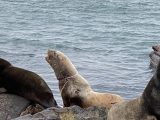
-
An entangled steller sea lion with a small rope or plastic strap around its neck. It has been on the island for at least the past two days.
-
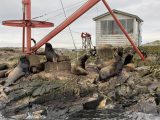
-
The california sea lion in the middle of the photo has a plastic strap around its neck. It has been on the island for at least the past two days.
-
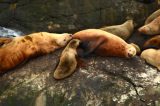
-
A young steller sea lion nursing
-
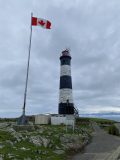
-
Newly raised Canadian flag
-
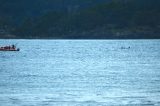
-
The dorsal fins of three orca seen passing through the north side of the ecological reserve. Four eco tour boats were nearby.
